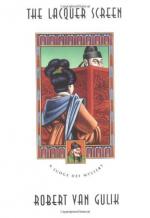|
This section contains 310 words (approx. 2 pages at 300 words per page) |
Lacquers are varnishes made by dissolving a cellulose-based solid resin, or polymer, with modifying components (usually plasticizer but sometimes pigments) into a solvent. The resultant coating dries quickly and leaves a hard, durable, usually high-gloss finish. Because lacquers dry by the evaporation of solvents, solvents that not only dissolve the components but also evaporate quickly must be used. Lacquers are normally applied using air sprayers because of their extremely short drying times. Originally high viscosity nitrocellulose compounds were used, but today, cellulose esters and cellulose ethers are more often used.
Though crude lacquers were used in the Orient as early as 200 b.c., modern processes for making lacquer were only developed around the beginning of the twentieth century. At this time, large companies, such as Du Pont and the International Smokeless Powder and Chemical Company, saw the potential for the use of lacquers in consumer products. They purchased the rights to lacquers and began research into plastic-based formulas known as Duco lacquers. By 1920 plastic lacquer was being used on broom handles and toys and within five years the use of lacquers in the United States had spread to a host of products.
These Duco lacquers were particularly important for industry because prior to their development, the production of anything needing to be coated, or painted, was slowed greatly by the drying time of the coating, especially when several coats were required. At times, manufacturers had 15,000 automobiles in warehouses for a week to a month while waiting for the paint to dry. However, Duco lacquers dried in minutes and were tremendously durable. The twenty-two coats of primers and varnishes previously required for cars were replaced by three or four coats of Duco. This material could be sprayed on rather than applied with a brush as with the older more viscous varnishes. It revolutionized the way consumer products were made.
|
This section contains 310 words (approx. 2 pages at 300 words per page) |


